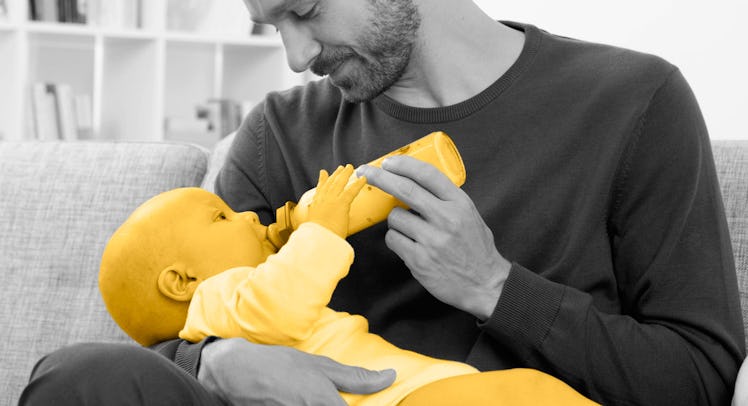How to Prepare a Bottle for Feeding
Breastmilk or formula, by hand or bottle prep machine – the most important part of this process is that the baby gets enough nutrition.

Bottle feeding is crucial for new mothers who are heading back to work, cannot produce the milk volume that their babies need, or have trouble convincing their little ones to latch. Crucial, but hardly intuitive. Preparing a baby bottle isn’t as easy as it sounds, and there are significant differences between preparing a bottle of formula and a bottle of breastmilk. Here’s what parents need to know about storing, warming, and preparing a bottle for feeding:
How to Prepare a Bottle for Feeding
- Pumped Breastmilk – Can be stored in the fridge, frozen, and combined with pumped milk from different days. Frozen milk should be thawed in a warm water bath.
- Formula – Can be mixed ahead of time and stored in the fridge for 24 hours. Always follow the directions.
- Unfinished bottles – If the bottle is formula and it isn’t finished in an hour, it should be dumped. Breastmilk can be safely stored in the fridge until the next feeding.
- Warming Bottles – Should be done with a warm water bath – NEVER with a microwave.
- Baby Bottle Prep – machines can help, but so can foresight. Measuring out the night’s doses can help streamline the process in the wee morning hours.
One key fact is that breastmilk is much less perishable than formula. “A common mistake parents make with bottle feeding expressed milk is that they…pour out milk that is perfectly fine to use for another feeding,” Leigh Anne O’Connor, a board certified lactation consultant, told Fatherly. “If a baby does not finish a bottle of fresh [breast] milk it can be saved for another feeding.” This is not the case with formula. So families that alternate between formula and breastmilk need to work to keep their bottles straight. “I recommended keeping the milk in a separate bottle from the formula, mostly because if you do not finish a bottle of formula it has to be thrown out. If you combine them and the baby does not finish the bottle, then they are throwing out breast milk.”
Freshly pumped breastmilk can also be frozen, and combined with milk expressed at different times or on different days, adding to its longevity. Not so with formula. “Most formulas can be made in bulk and stored in the refrigerator for 24 hours,” Deborah Malkoff-Cohen, a pediatric dietitian and nutritionist, told Fatherly. “Once a baby drinks formula from a bottle it is deemed contaminated and should be discarded if it isn’t finished within an hour.”
When it comes time to thaw breastmilk (or to warm it up) a warm water bath is the way to go. “Never microwave a bottle,” Malkoff-Cohen says. “You can warm a bottle in a cup of warm water. Bottle warmers are not necessarily needed; they’re mostly for convenience.” O’Conner agrees that microwaves are a bad idea. “You do not want to have hot spots and burn the baby,” she cautions.
As far as prepping a bottle for formula feeding, it can be fairly easy: just follow the instructions. “It depends on the formula you choose to use, but follow the instructions on the can, and always use the scoop that comes with it,” advises Malkoff-Cohen. “Most formulas are mixed two ounces water to one scoop, but some are one ounce of water to one scoop – don’t over pack the scoop or do a ‘heaping’ scoop; this changes the concentration and density of the calories.”
The instructions usually involve filling the baby bottle with water, adding the right amount of powdered formula, and then shaking it like hell. Bottled water is consistently the cleanest, but if parents have to use tap water, they can contact their pediatrician or local municipality to see if the tap water needs to be boiled first. Bottle preparation machines can help simplify the process; they keep the water at room temperature and pre-measure the formula powder.
“It’s a Keurig for baby formula,” says Malkoff-Cohen. Although she cautions that bottle preparation machines are not perfect. “You do still need to shake the bottle to thoroughly mix, though. They are expensive, can be loud and can break, and parts need to be cleaned daily. I have heard stories where they’ve mixed bottles incorrectly, but when it works it is amazing.”
This article was originally published on